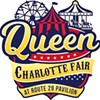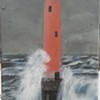What's new is that after years of suffering cynical jibes about the practicality of rail transit, the Charlotte Area Transit System is now being roundly criticized for not planning enough trains. A lesser man than transit chief Ron Tober might roll his eyes heavenward in supplication for relief from a fickle public. In fact it's a measure of his success, and that of his staff, that the argument has shifted from deriding trains in our city to clamoring for more rail service.
Transit planning has been made more difficult by the politics of perceived exclusion. Westside and eastside residents feel picked upon, casting themselves as second-class citizens who only merit the bus.
Eastside folks in Matthews really have no case. Living out at the far end of Independence Boulevard (soon to be a freeway), their transportation needs are best met by an improved point-to-point service taking them to Uptown. Independence is already being built with a dedicated bus lane, and it's barely feasible to imagine that properties bordering this highway monster might someday reinvent themselves as high-density urban villages. The pattern of auto domination is literally set in concrete.
Ironically, the primary use of light rail isn't to move people, it's to catalyze changes in land use toward a more sustainable pattern. If the 2025 Transit and Land Use Plan were just about moving passengers, buses would be the technology of choice everywhere. They're more efficient than light rail. And cheaper. But bus stops don't grow "urban villages" around them. Train stations do. It's a proven phenomenon from coast to coast.
Charlotte needs to develop a network of high-intensity, mixed-use neighborhoods along the rail lines, creating a "parallel city," an alternative to car-clogging commutes from far-flung suburbia. Not only is this alternative future good for us citizens, it's good for the city as a whole. Transportation choice and more environmentally sustainable settlement patterns improve our competitive edge among our peers in the global marketplace.
All this being said, the folks on the Westside do have reason to feel wronged. Independence may be a lost cause, but Freedom Drive or Wilkinson Boulevard can still be tamed and redeveloped around light rail that links downtown with the airport. But for all its size and glitz, the airport remains a hub, not a primary destination, and the number of passengers who need to go downtown from the airport is small. In the final analysis, financial factors doom the possibility of Westside rail: it would cost about three times the federal guideline figures that determine light rail viability.
We also have a not-so-high-tech problem. I'm talking about the train stations. Word on the street is that city officials have already set the design for these little civic buildings: they have to be brick, have arches, and look as if they were built a hundred years ago!
Am I the only person in Charlotte who regards this as completely idiotic? Perhaps we could put fake little bells and whistles on the hi-tech railcars to make them look matchingly "cute." Go to any new rail system in Europe and the stations are minor masterworks of contemporary architecture. In London, new stations are light, airy and speak the same language as the state-of-the-art train engineering. The stations are hugely popular, and books have been written about their architecture. But you needn't go to London -- Dallas, TX, also has very good contemporary station design.
But here in Charlotte, vision is timidly trapped in the days of yore. More poignantly, we're imprisoned in a bygone era that never was. After demolishing almost every building that imparted some character to our bland metropolis, our urban tastemakers now demand that our future be forced to resemble the history we destroyed. But what you get in the process is a fake, a pathetic parody of our past. If we're not careful, the sleek, gleaming trains of the future will glide to a halt in stations that recall the horse and buggy era. Perhaps we could hire a few old-timers in Victorian dress to hang around the platforms to increase the effect of a period tableau.
The few genuine antiques we do possess, including the historic trolleys themselves, are caught in this cultural chasm between progressive technology and retro architecture. Their authenticity as true historical artifacts is only demeaned by a shallow reproduction of counterfeit history.
We live in a paradox: our passionate pursuit of progress is wedded to a fundamental fear of the future. Planners want false facades instead of light, new high-tech structures. Are Charlotte architects meekly complicit with this fakery, or is our local profession made of sterner stuff? Hopefully, we can fight for the future, and not be cowed by the burden of nostalgia.
Speaking of News_walters.html
-
So Long And Thanks For All The Fish
May 25, 2005 -
Repairer of the Breach
May 18, 2005 -
Dilworth Drama Redux
May 11, 2005 - More »
Latest in David Walters
More by David Walters
-
So Long And Thanks For All The Fish
May 25, 2005 -
Repairer of the Breach
May 18, 2005 -
Dilworth Drama Redux
May 11, 2005 - More »
Calendar
-

Wine & Paint @ Blackfinn Ameripub- Ballantyne
-

Queen Charlotte Fair @ Route 29 Pavilion
-

NEW WINDOW GALLERY-Pat Rhea-ACRYLIC PAINTINGS-April 05-30 2024 VALDESE, NC 28690 @ New Window Gallery/Play It Again Records
- Through April 30, 12 p.m.
-

TheDiscountCodes
-

Face to Face Foundation Gala @ The Revelry North End
-
Homer's night on the town 41
If you drank a shot with the Knights mascot on Sept. 20, you were basically harboring a fugitive
-
Beauty Industry Trends To Look Out For In Charlotte In 2022
-
Navigating the thrilling intersection of sports and betting in North Carolina






